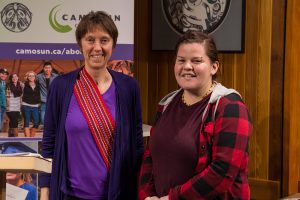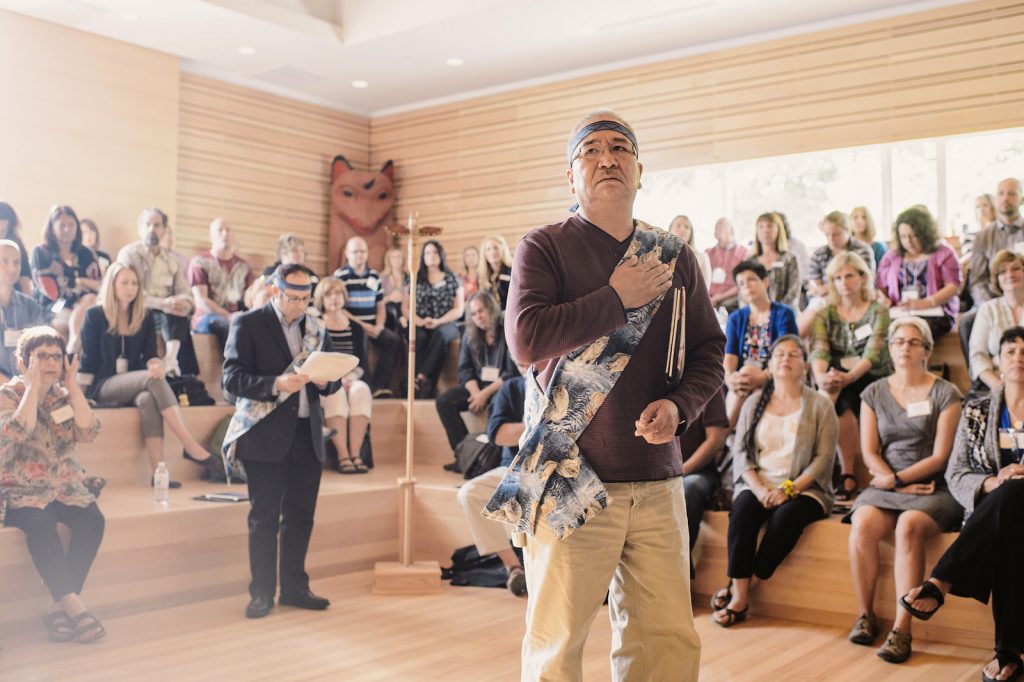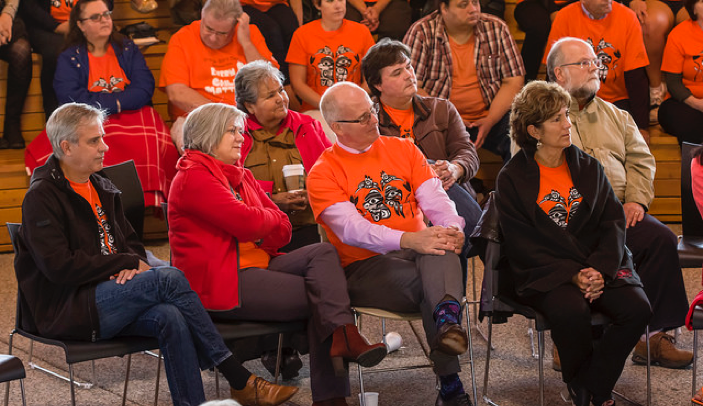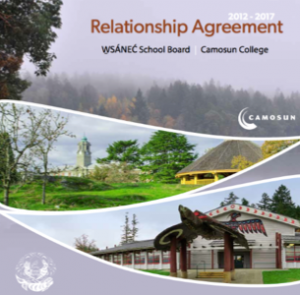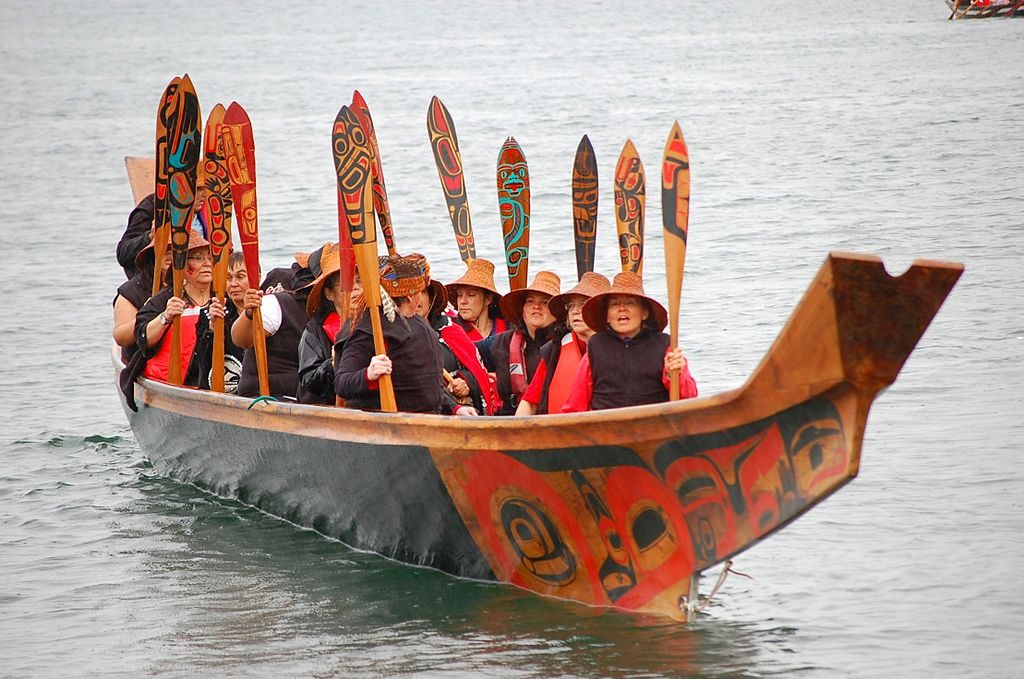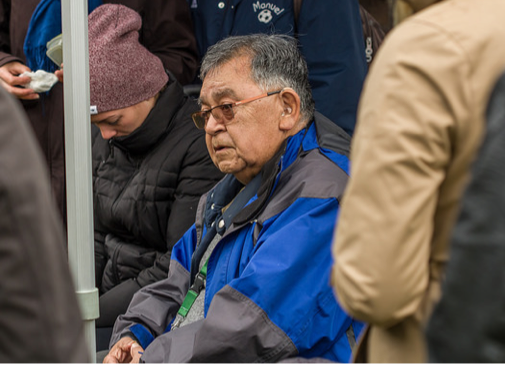There is a rich and growing body of books, articles, videos, and websites focusing on Indigenizing education. The following resources have been chosen to support the journey outlined in this guide.
Camosun College, Centre for Indigenous Education and Community Connections (Eyēʔ Sqȃ’lewen). (2013). Inspiring relationships: Indigenization plan [PDF]. http://camosun.ca/learn/school/indigenous-education-community-connections/about/publications/indigenization-plan13.pdf
Camosun College, Centre for Indigenous Education and Community Connections (Eyēʔ Sqȃ’lewen). (2017). Aboriginal service plan: Final report 2016–2017 [PDF]. http://camosun.ca/learn/school/indigenous-education-community-connections/aboriginal-service-plan/aboriginal-service-plan.pdf
Canadian Association of University Teachers. (n.d.). Guide to acknowledging First Peoples and traditional territory. https://www.caut.ca/content/guide-acknowledging-first-peoples-traditional-territory
Colleges and Institutes Canada. (n.d.). Indigenous education protocol. https://www.collegesinstitutes.ca/policyfocus/indigenous-learners/protocol/
On Being, Civil Conversations Project. (2017). Better conversations: A starter guide [PDF]. Minneapolis, MN: Krista Tippett Public Productions. https://static1.squarespace.com/static/52e04689e4b06ba19ad5a957/t/58ee9cc5bf629a9dbf438b59/1492032709477/onbeing_ccp_guide_12April2017.pdf
Truth and Reconciliation Commission of Canada. (2015). Truth and Reconciliation Commission of Canada: Calls to action PDF]. http://nctr.ca/assets/reports/Calls_to_Action_English2.pdf
Truth and Reconciliation Commission of Canada. (2015). Honouring the truth, reconciling for the future: Summary of the final report of the Truth and Reconciliation Commission of Canada [PDF]. http://nctr.ca/assets/reports/Final%20Reports/Executive_Summary_English_Web.pdf
Universities Canada. (2015). Universities Canada principles on Indigenous education. https://www.univcan.ca/media-room/media-releases/universities-canada-principles-on-indigenous-education/
University of Victoria, Nicola Valley Institute of Technology, & Indigenous and Higher Learning Association. (2011). Post-Secondary Education Partnership Agreement Toolkit [PDF]. http://iahla.ca/wp-content/uploads/IAHLA-Toolkit-Dec-2011.pdf
W̱SÁNEĆ School Board & Camosun College. (2012). Relationship agreement 2012–2017 [PDF]. http://camosun.ca/learn/school/indigenous-education-community-connections/about/publications/wsanec-agreement12.pdf
Archibald, J. (2008). Indigenous storywork: Educating the heart, mind, body, and spirit. Vancouver, BC: UBC Press.
Battiste, M. (2013). Decolonizing education: Nourishing the learning spirit. Vancouver, BC: UBC Press.
Bishop, A. (2015). Becoming an ally: Breaking the cycle of oppression in people. Halifax, NS: Fernwood.
Cajete, G. (2015). Indigenous community: Rekindling the teachings of the seventh fire. Minneapolis, MN: Living Justice Press.
Davis, L. (2010). Alliances: Re/Envisioning Indigenous-non-Indigenous relationships. Toronto, ON: University of Toronto Press.
de Oliveira Andreotti, V., Stein, S., Ahenakew, C., & Hunt, D. (2015). Mapping interpretations of decolonization in the context of higher education. Decolonization: Indigeneity, Education and Society, 4, 21–40. http://www.decolonization.org/index.php/des/article/view/22168/18470
Doerfler, J., Sinclair, Niigaanwewidam J., & Stark, H. Kiiwetinepinesiik (Eds.). (2013). Centering Anishinaabeg studies: Understanding the world through stories. Winnipeg, MB: University of Manitoba Press, 2013.
Gallop, C.J., & Bastien, N. (2016). Supporting success: Aboriginal students in higher education [PDF]. Canadian Journal of Higher Education, 46, 206–224. http://journals.sfu.ca/cjhe/index.php/cjhe/article/view/184772/pdf
Giroux, M. (2017, November 19). If “indigenizing” education feels this good, we aren’t doing it right. The Conversation. http://theconversation.com/if-indigenizing-education-feels-this-good-we-arent-doing-it-right-87166
Kahane, P. (2017). Collaborating with the enemy: How to work with people you don’t agree with or like or trust. Oakland, CA: Berrett-Koehler.
Kuokkanen, R. (2008). Reshaping the university: Responsibility, Indigenous epistemes, and the logic of the gift. Vancouver, BC: UBC Press.
Pete, S. (2016). 100 ways: Indigenizing and decolonizing academic programs. Aboriginal Policy Studies, 6, 81–89. doi: http://dx.doi.org/10.5663/aps.v6i1.27455
Sellars, B. (2012). They called me number one: Secrets and survival at an Indian residential school. Vancouver, BC: Talon Books.
Tuhiwai Smith, L. (2012). Decolonizing methodologies: Research and Indigenous Peoples. London, England: Zed Books.
Vowel, C. (2016, September 23). Beyond territorial acknowledgements. Âpihtawikosisân (blog). http://apihtawikosisan.com/2016/09/beyond-territorial-acknowledgments/
Cahana, K., & Ou, E. (directors). (2017). Dancing towards the light. Canadian Broadcasting Corporation. http://www.cbc.ca/news2/interactives/dancing-towards-the-light-nunavut-youth/
Canadian Broadcasting Corporation. (2013). Reds, Whites & the Blues. (CBC Newsworld documentary; available to Curia.ca subscribers only.) https://curio.ca/en/video/reds-whites-the-blues-822/
Canadian Broadcasting Corporation. (June 2015). Interview with Justice Murray Sinclair on The National. http://www.cbc.ca/player/play/2668647786
Johnson, S. (Mukwa Musayett). (2017). Towards Indigenizing Higher Ed: An Online Storytelling Series. Thompson Rivers University. https://towards-indigenizing.trubox.ca/foundations/
Sinclair, Niigaanwewidam J. (2016). What does an Indigenous university look like? TEDxUManitoba. https://youtu.be/egZ9w2Xkp90
Sinek, S. (2009). How great leaders inspire action. TEDxPuget Sound. https://www.ted.com/talks/simon_sinek_how_great_leaders_inspire_action#t-186404
S’TENISTOLW 2017: Indigenous Adult Education Conference (August 23–25, 2017, Camosun College). Keynote speaker videos:
Vowel, C. (2017). Indigenization in the time of pipelines. (2016–2017 Weweni Indigenous Scholars Speaker Series, University of Winnipeg). https://youtu.be/_h8ucu3J-tk
Camosun College, Centre for Indigenous Education and Community Connections (Eyēʔ Sqȃ’lewen). (n.d.). Indigenization Initiative: Inspiring relationships. http://camosun.ca/about/indigenization/index.html
Fraser, C., & Komarnisky, S. (2017). 150 acts of reconciliation for the last 150 days of Canada’s 150. ActiveHistory.ca. http://activehistory.ca/2017/08/150-acts-of-reconciliation-for-the-last-150-days-of-canadas-150/
KAIROS Canada. (n.d.). What is the KAIROS Blanket Exercise? https://www.kairosblanketexercise.org/
On Being. (n.d.). Civil Conversations Project. http://www.civilconversationsproject.org/
University of Alberta. (n.d.). Indigenous Canada (Massive Open Online Course/MOOC). https://www.ualberta.ca/admissions-programs/online-courses/indigenous-canada
University of British Columbia. (n.d.). Reconciliation through Indigenous education (Massive Open Online Course/MOOC). http://pdce.educ.ubc.ca/reconciliation/
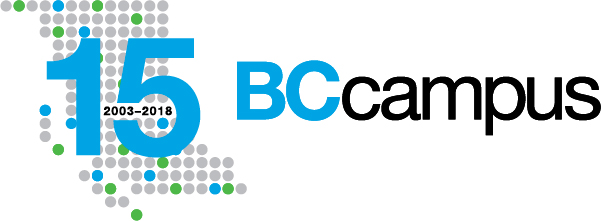
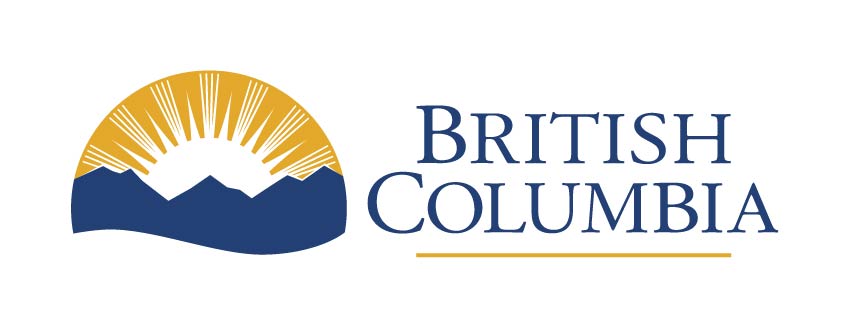


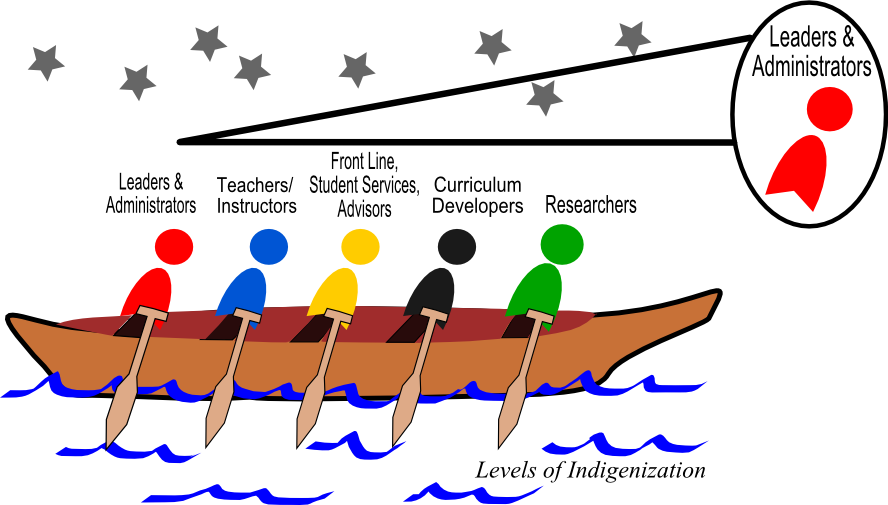


 Kahhah, the raven, represents our behaviour, which includes the determination to paddle to the place where we will discover what we need to be successful in the journey.
Kahhah, the raven, represents our behaviour, which includes the determination to paddle to the place where we will discover what we need to be successful in the journey.

